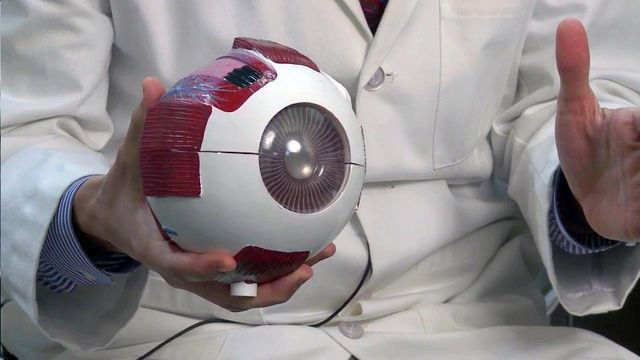Eye misalignment often helped by surgery
Surgery or glasses can fix an eye disorder called strabismus, which usually shows up at an early age.
Posted — UpdatedWhen Jack Everitt was born, everything about his health seemed to fit together perfectly. Then his parents noticed something amiss.
“About two weeks before his second birthday, my husband and I both kind of looked at each other and said, ‘Did you...did you see that?’" said his mother, Jennifer Everitt.
Both of his eyes were turning inward.
“We thought it came on suddenly, but then looking back at pictures, we could see that there might have been a slight turn that we weren't noticing before,” Everitt said.
Jack, now 5, had an eye disorder called strabismus.
Duke University pediatric ophthalmologist Dr. David Wallace says sometimes the eye's muscles don't function properly - or the brain isn't controlling them properly. It can be a genetic issue or simply a vision problem.
For some patients with eye muscle problems, eye exercises or glasses will be sufficient, but some patients do require surgery. Wallace says surgery has an 80 to 90 percent success rate.
Correcting strabismus in children is important.
“It not only allows the child to use their eyes together, which is good for depth perception, but also allows them to interact more normally in a social environment,” Wallace said.
Glasses weren't enough to correct Jack's eyes. He needed surgery.
“The surgery itself took about 45 minutes and then, after he was done, his eyes looked perfectly straight,” his mother said.”
He still needs the glasses for vision correction.
The earlier parents notice a misalignment of their child’s eyes, the better. However, doctors say it is not uncommon to see misaligned eyes in newborns. That usually resolves in a few months.
• Credits
Copyright 2024 by Capitol Broadcasting Company. All rights reserved. This material may not be published, broadcast, rewritten or redistributed.





